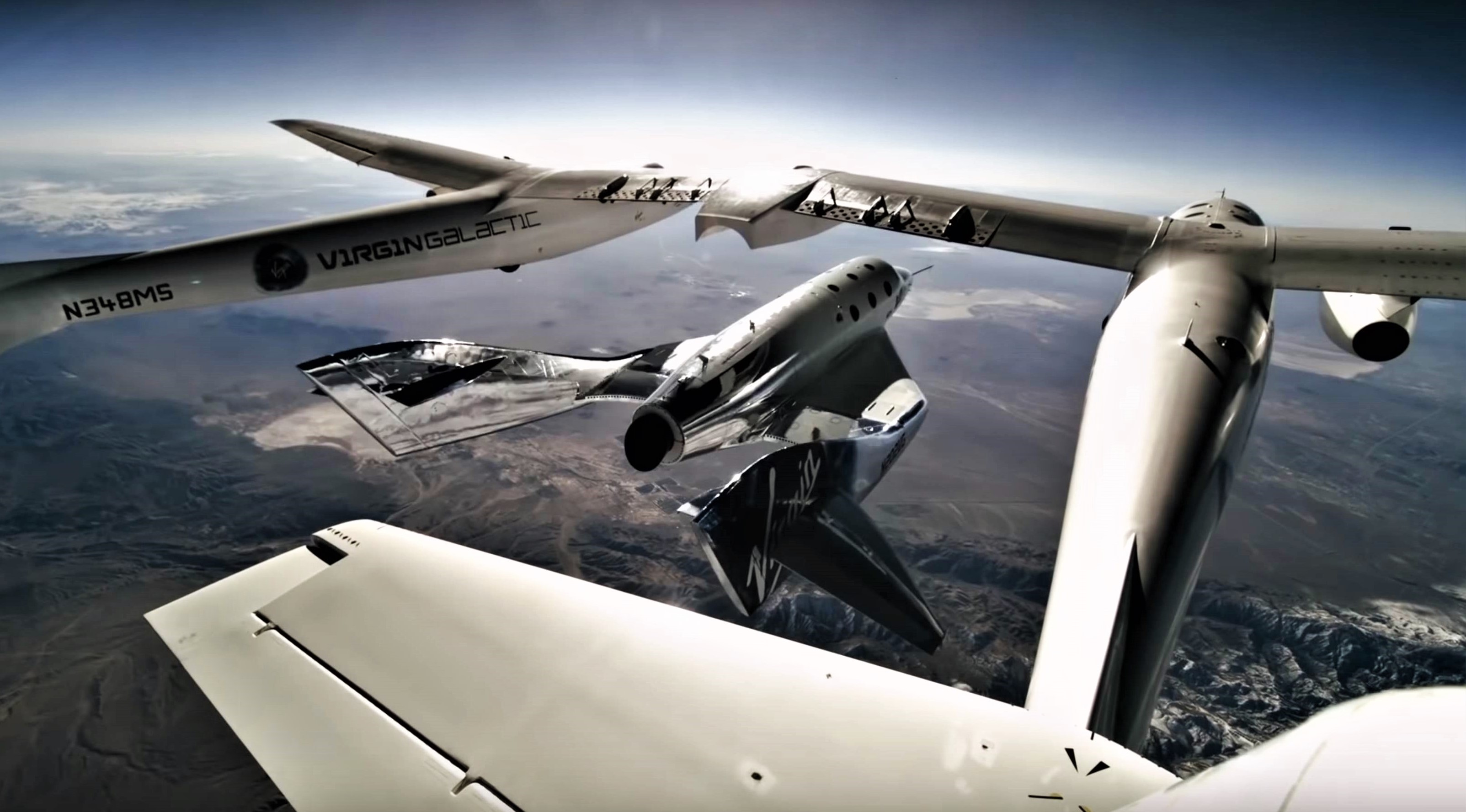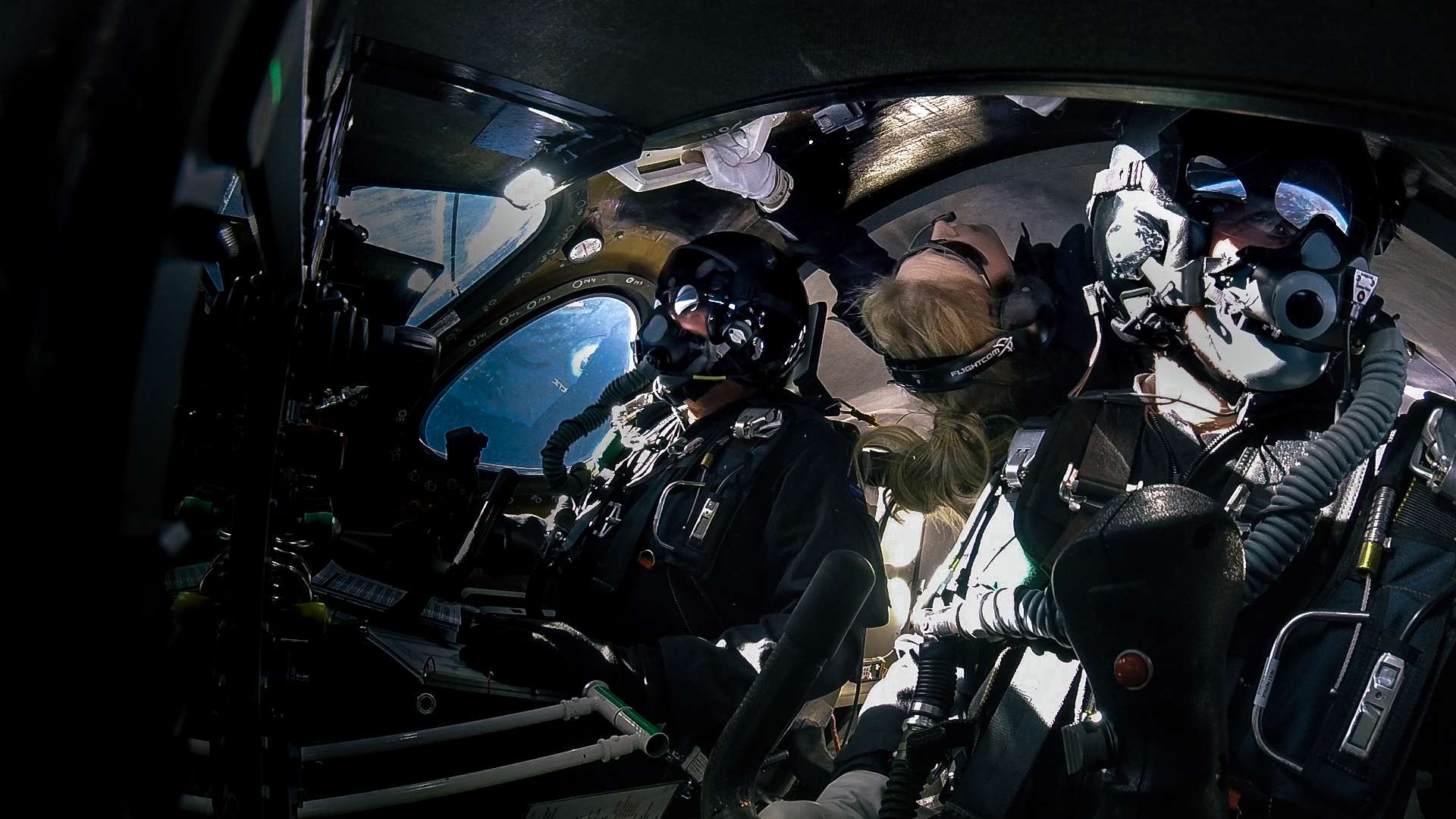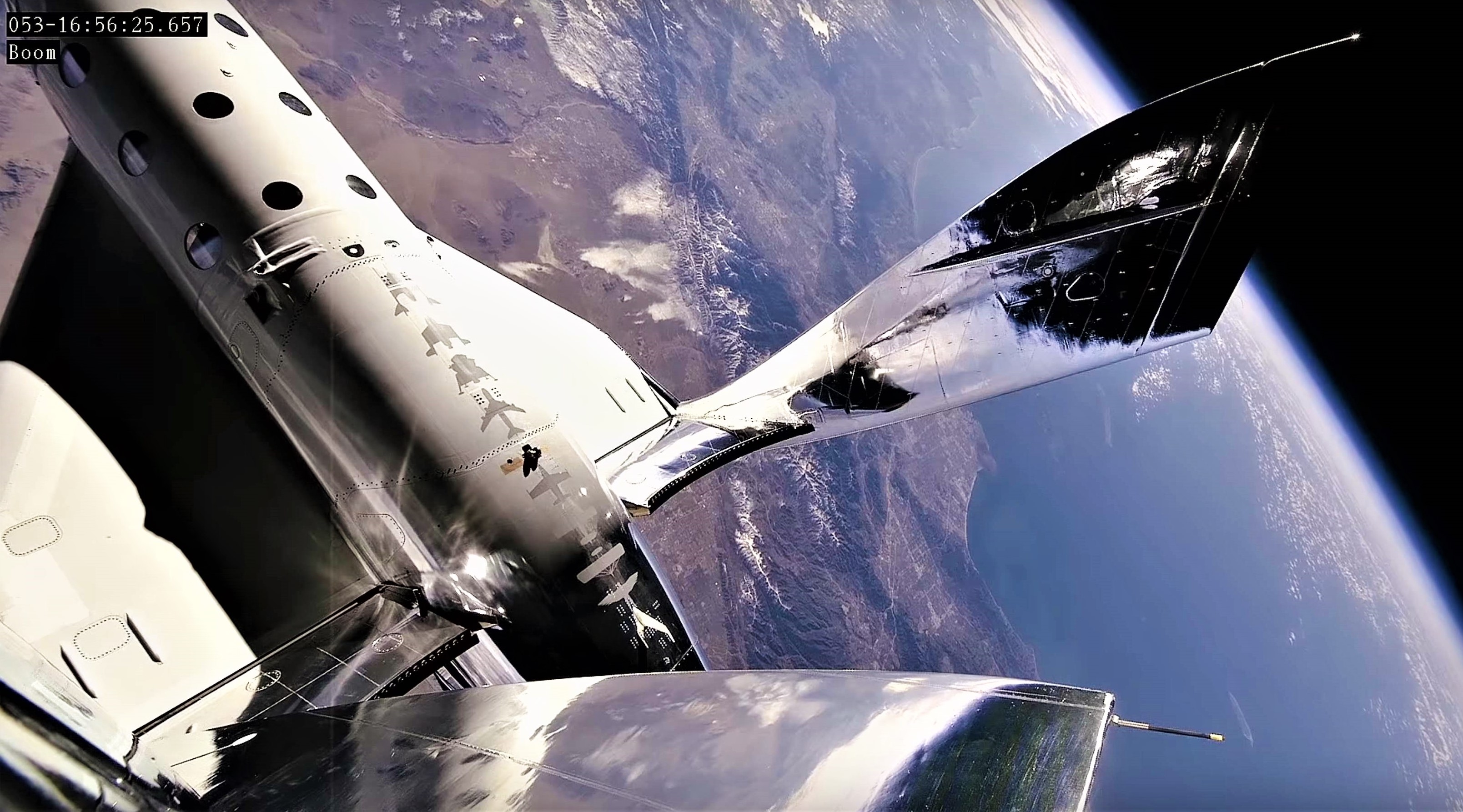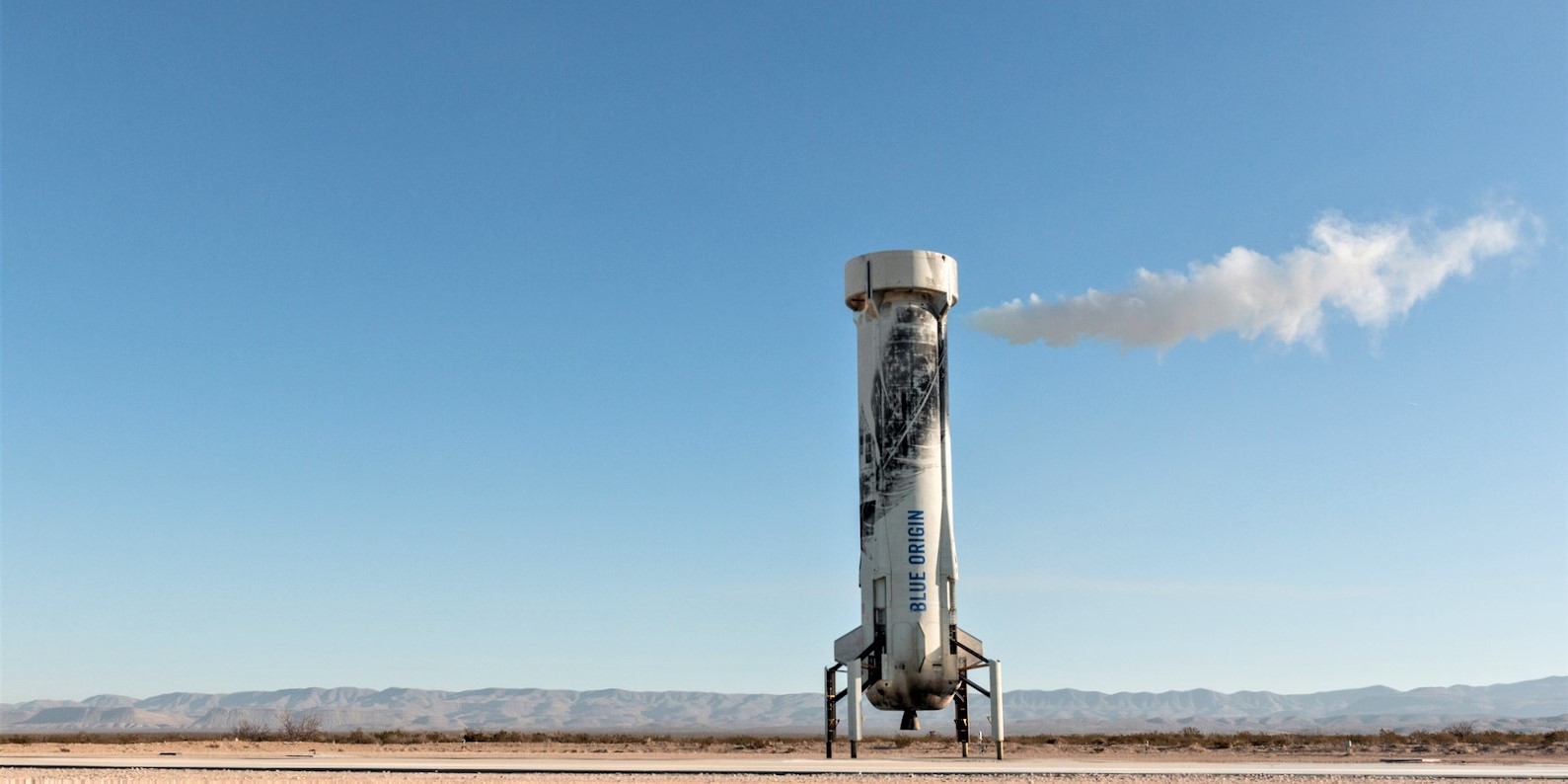News
DeepSpace: Virgin Galactic and Blue Origin banter about the fine print of suborbital tourism

Welcome to the sixth edition of our new newsletter, DeepSpace! Each Tuesday, I’ll be taking a deep-dive into the most exciting developments in commercial space, from satellites and rockets to everything in between. If you’d like to receive DeepSpace and all of our newsletters and membership benefits,
Just shy of two months into 2019, the new year has been marked by a distinct focus on human spaceflight. Most of that focus has centered (as it should) on the relatively imminent launch debut of both SpaceX’s Crew Dragon and Boeing’s Starliner, crewed spacecraft designed and built to carry astronauts into orbit for NASA.
However, beyond SpaceX and Boeing, a considerable amount of noise is being made about the labors and relative progress of companies like Blue Origin and Virgin Galactic, both primarily focused on building a suborbital tourism market with their New Shepard and SpaceShipTwo launch vehicles. Coming as no surprise from companies aiming to create a sustainable market for a very expensive consumer product, both products have been dragged through a torturous maze of marketing hype in a process that has not really done the serious endeavor of human spaceflight any favors.
The Shepard and the Ship
- Virgin Galactic’s launch vehicle provider The Spaceship Company has been working to develop a suborbital platform to launch humans since the early 2000s, incorporated after billionaire Paul Allen funded a group of companies that ultimately won the Ansari X Prize in 2004.
- The Virgin/TSC approach involves a carrier aircraft (Known as White Knight Two) and a much smaller rocket plane (SpaceShipTwo) that is carried up to ~30,000 feet (9 km) before dropping and igniting its engine.
- SpaceShipTwo is meant to reach a maximum altitude of around 300,000 feet (~90 km) at a top speed of roughly Mach 3 (1000 m/s, 2200 mph) before gliding back to land on the same runway.
- In 2014, a combination of bad aeronautical design and pilot error triggered the in-flight failure of the first SpaceShipTwo, killing one of its two pilots. A member of the NTSB board that investigated the failure stated that Scale Composites (one of TSC’s parent companies) “put all their eggs in the basket of the pilots [flying the vehicle] correctly.”
- In a February 2019 video, Virgin Galactic CEO George Whitesides noted that “many aircraft are moving to being less piloted over time [but] our vehicle really is piloted to space.”
- SpaceShipTwo most recently launched on February 22nd.
- Blue Origin has yet to launch an actual human on New Shepard, a small, reusable single-stage rocket designed to loft a separate passenger capsule to approximately 100 km (330,000 ft).
- New Shepard has conducted ten launches since its 2015 debut, most of which saw the crew capsule and booster approximately reach that nominal 100 km apogee and nine of which concluded with a successful landing of the rocket’s booster.
- Capable of carrying up to six passengers, the Crew Capsule features a built-in abort motor that has been successfully tested, as well as a parachute system for a relatively soft landing at end-of-mission.


“Spacecraft” and “astronauts”
- Aside from the generally impressive technology itself and the undeniable challenges and risks of launch humans on fueled rockets, both Blue Origin’s New Shepard and Virgin Galactic’s SpaceShipTwo exist – albeit with different weights – to cater to a new market, suborbital or “space” tourism.
- While NASA is taking advantage of the opportunities to test small experiments with both vehicles as a partial platform, the real goal of both vehicles is to routinely launch paying customers.
- While Blue Origin has yet to announce ticket pricing, Virgin Galactic has priced their offering at $250,000 per person. In both cases, the end result will likely be a six-figure sum in return for an experience that should last no more than 10-60 minutes from start to finish, excluding buildup from screening and whatever training is deemed necessary.
- In other words, short of cases involving charity, tickets on New Shepard and SpaceShipTwo will almost indefinitely be reserved for less than 1% of humanity, those with income around $1M or more per year. This is by no means a bad thing and is, in fact, a proven first or second step in the direction of democratizing exotic or expensive technologies like air travel, computers, and even electric cars (namely Teslas).
- However, both companies are laser-focused on branding their vehicles as spacecraft and their passengers as astronauts, with Virgin Galactic being the worst offender in this regard.
- Aside from literally calling its 600+ prospective customers “Future Astronauts”, Virgin Galactic uses every chance it gets to hammer home its claim that SpaceShipTwo is a commercial spacecraft and its pilots true licensed, “wing”-ed astronauts.
- While passengers are not eligible for official FAA ‘astronauts’ wings’, it appears that Virgin will continue to market its passenger experience as one where customers will get to ‘travel to space’ and more or less become astronauts.
- Blue Origin describes its commercial offering as a “reusable suborbital rocket system designed to take astronauts and research payloads past the Kármán line – the internationally recognized boundary of space.”
- Both Blue and Virgin flights offer about ~4 minutes of weighlessness between launch and landing.
- Virgin Galactic Makes Space for Second Time in Ten Weeks with Three On Board
- For context, Alan Shepard – the US test pilot and namesake of New Shepard – was launched to an altitude of almost 190 km (120 mi) for what was recognized as the first US “spaceflight” and spent something like 5-10 minutes in microgravity and above the Karman Line (100 km).
- Used as a rough measure for a sort of fixed, arbitrary boundary between “Earth” and “Space”, reasonable arguments have been made in the last few years that the 100 km Karman Line could more accurately be placed around 70-90 km, in which case Virgin Galactic might actually be technically correct when saying that SpaceShipTwo and its passengers are traveling to space.
- Fewer than 570 humans in all of history have visited space (> 100 km), around 99.5% of which were astronauts that reached orbit. To call pilots of a spaceplane as distinctly suborbital as SpaceShipOne “astronauts” is palatable, particularly given the risks they face as test subjects and test pilots.
- However, to even hinting that tourists riding New Shepard or SpaceShipTwo to altitudes of ~80-100 kilometers are astronauts would do an immense disservice to those that pushed the limits of technology, risked their lives, or even died in pursuit of orbital spaceflight, the only kind of spaceflight with any significant utility.
- Much like cruise ship customers are not under the impression that they are coming along to ‘become sailors’, suborbital tourists are not astronauts. That being said, it’s not inaccurate to describe the experience they will have the privilege of being part of as something truly extraordinary, given that they will become one of a very select few humans to have actually launched on a rocket or seen the exaggerated curvature of Earth’s limb against the blackness of space.
- SpaceX’s first attempted orbital launch of Crew Dragon – a spacecraft designed to transport astronauts to and from the International Space Station – is set to occur as early as 2:49 am EST/07:49 UTC on March 2nd.
- This is the first truly serious date, thanks to the successful completion of a critical pre-launch review conducted by NASA and SpaceX.
- The second launch of Falcon Heavy could occur as early as late March
- Aside from DM-1 and Falcon Heavy Flight 2, it’s unclear what SpaceX mission will happen next, although a West Coast launch (the Radarsat Constellation Mission) is a strong candidate.
Mission Updates |
Photos of the Week:
After successfully sending the world’s first commercial lunar lander on its way to the Moon and placing Indonesian communications satellite PSN-6 in a high-energy Earth orbit, Falcon 9 B1048 completed its third launch and landing and returned to port on February 24th. The booster’s fourth mission, a Crew Dragon in-flight abort test, will likely destroy B1048, making this its last successful recovery. (c. Tom Cross)


Elon Musk
Tesla investors will be shocked by Jim Cramer’s latest assessment
Jim Cramer is now speaking positively about Tesla, especially in terms of its Robotaxi performance and its perception as a company.

Tesla investors will be shocked by analyst Jim Cramer’s latest assessment of the company.
When it comes to Tesla analysts, many of them are consistent. The bulls usually stay the bulls, and the bears usually stay the bears. The notable analysts on each side are Dan Ives and Adam Jonas for the bulls, and Gordon Johnson for the bears.
Jim Cramer is one analyst who does not necessarily fit this mold. Cramer, who hosts CNBC’s Mad Money, has switched his opinion on Tesla stock (NASDAQ: TSLA) many times.
He has been bullish, like he was when he said the stock was a “sleeping giant” two years ago, and he has been bearish, like he was when he said there was “nothing magnificent” about the company just a few months ago.
Now, he is back to being a bull.
Cramer’s comments were related to two key points: how NVIDIA CEO Jensen Huang describes Tesla after working closely with the Company through their transactions, and how it is not a car company, as well as the recent launch of the Robotaxi fleet.
Jensen Huang’s Tesla Narrative
Cramer says that the narrative on quarterly and annual deliveries is overblown, and those who continue to worry about Tesla’s performance on that metric are misled.
“It’s not a car company,” he said.
He went on to say that people like Huang speak highly of Tesla, and that should be enough to deter any true skepticism:
“I believe what Musk says cause Musk is working with Jensen and Jensen’s telling me what’s happening on the other side is pretty amazing.”
Tesla self-driving development gets huge compliment from NVIDIA CEO
Robotaxi Launch
Many media outlets are being extremely negative regarding the early rollout of Tesla’s Robotaxi platform in Austin, Texas.
There have been a handful of small issues, but nothing significant. Cramer says that humans make mistakes in vehicles too, yet, when Tesla’s test phase of the Robotaxi does it, it’s front page news and needs to be magnified.
He said:
“Look, I mean, drivers make mistakes all the time. Why should we hold Tesla to a standard where there can be no mistakes?”
It’s refreshing to hear Cramer speak logically about the Robotaxi fleet, as Tesla has taken every measure to ensure there are no mishaps. There are safety monitors in the passenger seat, and the area of travel is limited, confined to a small number of people.
Tesla is still improving and hopes to remove teleoperators and safety monitors slowly, as CEO Elon Musk said more freedom could be granted within one or two months.
News
Tesla launches ultra-fast V4 Superchargers in China for the first time
Tesla has V4 Superchargers rolling out in China for the first time.

Tesla already has nearly 12,000 Supercharger piles across mainland China. However, the company just initiated the rollout of the ultra-fast V4 Superchargers in China for the first time, bringing its quick-charging piles to the country for the first time since their launch last year.
The first batch of V4 Superchargers is now officially up and running in China, the company announced in a post on Chinese social media outlet Weibo today.
The company said in the post:
“The first batch of Tesla V4 Superchargers are online. Covering more service areas, high-speed charging is more convenient, and six-layer powerful protection such as rain and waterproof makes charging very safe. Simultaneously open to non-Tesla vehicles, and other brands of vehicles can also be charged. There are more than 70,000 Tesla Superchargers worldwide. The charging network layout covers 100% of the provincial capitals and municipalities in mainland China. More V4 Superchargers will be put into use across the country. Optimize the charging experience and improve energy replenishment efficiency. Tesla will accompany you to the mountains, rivers, lakes, and seas with pure electricity!”
The first V4 Superchargers Tesla installed in China are available in four cities across the country: Shanghai, Zhejiang, Gansu, and Chongqing.

Credit: Tesla China
Tesla has over 70,000 Superchargers worldwide. It is the most expansive and robust EV charging network in the world. It’s the main reason why so many companies have chosen to adopt Tesla’s charging connector in North America and Europe.
In China, some EVs can use Tesla Superchargers as well.
The V4 Supercharger is capable of charging vehicles at speeds of up to 325kW for vehicles in North America. This equates to over 1,000 miles per hour of charging.
Elon Musk
Elon Musk hints at when Tesla could reduce Safety Monitors from Robotaxi
Tesla could be reducing Safety Monitors from Robotaxi within ‘a month or two,’ CEO Elon Musk says.

Elon Musk hinted at when Tesla could begin reducing Safety Monitors from its Robotaxis. Safety Monitors are Tesla employees who sit in the front passenger seat during the driverless rides, and are there to ensure safety for occupants during the earliest rides.
Tesla launched its Robotaxi fleet in Austin last Sunday, and after eight days, videos and reviews from those who have ridden in the driverless vehicles have shown that the suite is safe, accurate, and well coordinated. However, there have been a few hiccups, but nothing that has put anyone’s safety in danger.
A vast majority — close to all of the rides — at least according to those who have ridden in the Robotaxi, have been performed without any real need for human intervention. We reported on what was the first intervention last week, as a Safety Monitor had to step in and stop the vehicle in a strange interaction with a UPS truck.
Watch the first true Tesla Robotaxi intervention by safety monitor
The Tesla and UPS delivery truck were going for the same street parking space, and the Tesla began to turn into it. The UPS driver parallel parked into the spot, which was much smaller than his truck. It seemed to be more of an instance of human error instead of the Robotaxi making the wrong move. This is something that the driverless cars will have to deal with because humans are aggressive and sometimes make moves they should not.
The Safety Monitors have not been too active in the vehicles. After all, we’ve only seen that single instance of an intervention. There was also an issue with the sun, when the Tesla braked abnormally due to the glare, but this was an instance where the car handled the scenario and proceeded normally.
With the Robotaxi fleet operating impressively, some are wondering when Tesla will begin scaling back both the Safety Monitors and Teleoperators that it is using to ensure safety with these early rides.
CEO Elon Musk answered the inquiry by stating, “As soon as we feel it is safe to do so. Probably within a month or two.”
As soon as we feel it is safe to do so.
Probably within a month or two. We continue to improve the Tesla AI with each mile driven.
— Elon Musk (@elonmusk) June 30, 2025
Musk’s response seems to confirm that there will be fewer Teleoperators and Safety Monitors in the coming months, but there will still be some within the fleet to ensure safety. Eventually, that number will get to zero.
Reaching a point where Tesla’s Robotaxi is driverless will be another significant milestone for the company and its path to fully autonomous ride-sharing.
Eventually, Tesla will roll out these capabilities to consumer-owned vehicles, offering them a path to generate revenue as their car operates autonomously and completes rides.
For now, Tesla is focusing on perfecting the area of Austin where it is currently offering driverless rides for just $4.20 to a small group of people.
-

 News5 days ago
News5 days agoTesla Robotaxi’s biggest challenge seems to be this one thing
-

 News2 weeks ago
News2 weeks agoTesla confirms massive hardware change for autonomy improvement
-

 Elon Musk2 weeks ago
Elon Musk2 weeks agoElon Musk slams Bloomberg’s shocking xAI cash burn claims
-

 News2 weeks ago
News2 weeks agoTesla features used to flunk 16-year-old’s driver license test
-

 News2 weeks ago
News2 weeks agoTesla China roars back with highest vehicle registrations this Q2 so far
-

 News2 weeks ago
News2 weeks agoTexas lawmakers urge Tesla to delay Austin robotaxi launch to September
-

 News2 weeks ago
News2 weeks agoTesla dominates Cars.com’s Made in America Index with clean sweep
-

 News2 weeks ago
News2 weeks agoTesla’s Grok integration will be more realistic with this cool feature

























